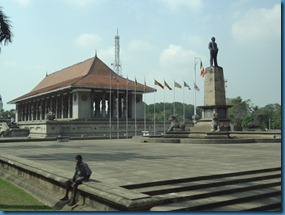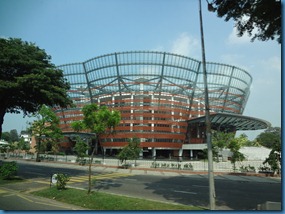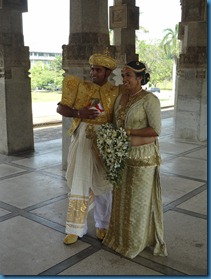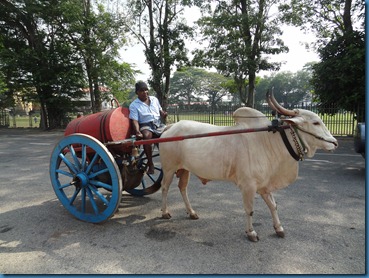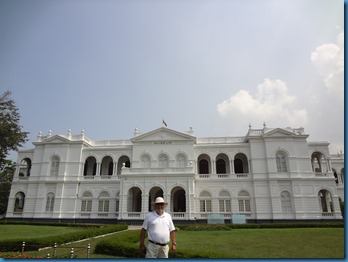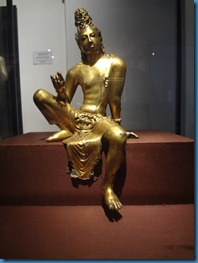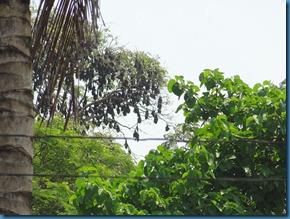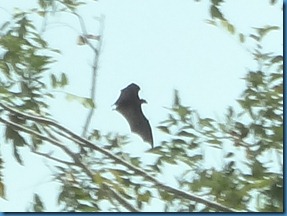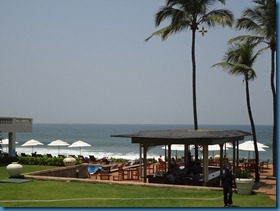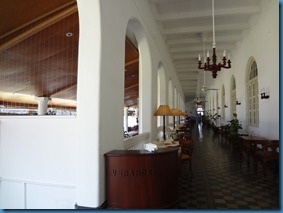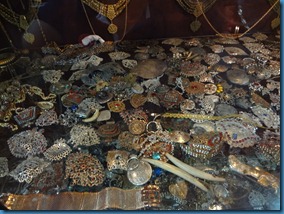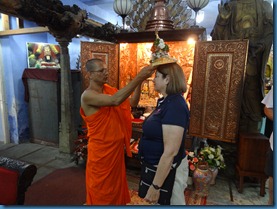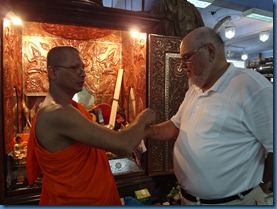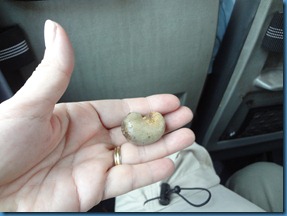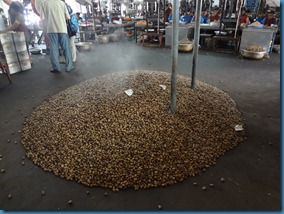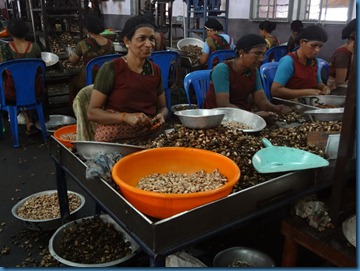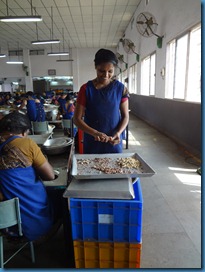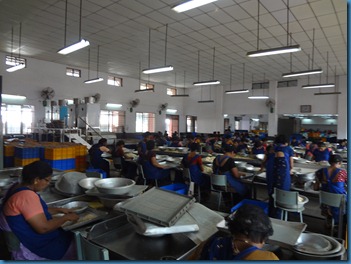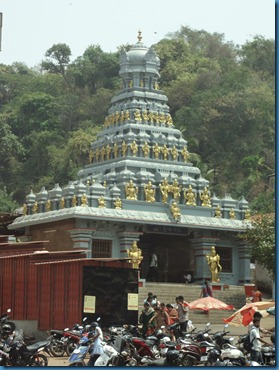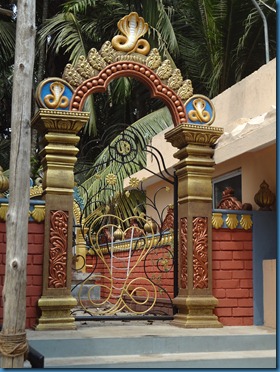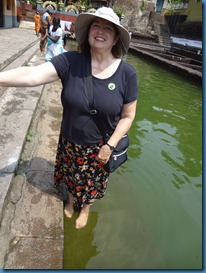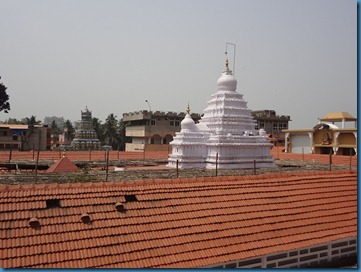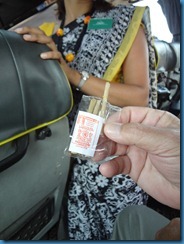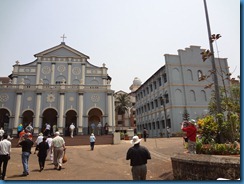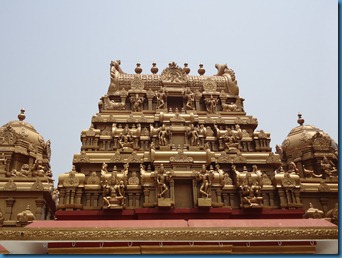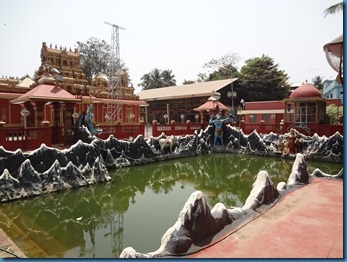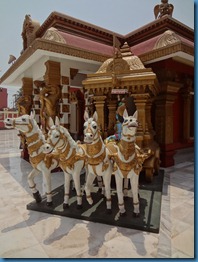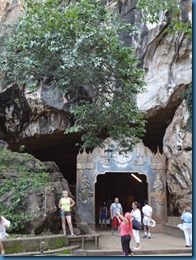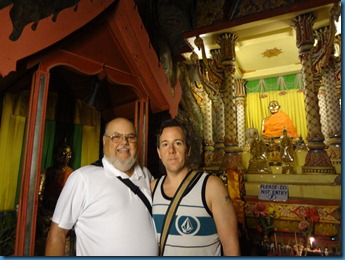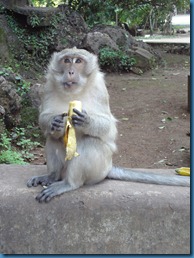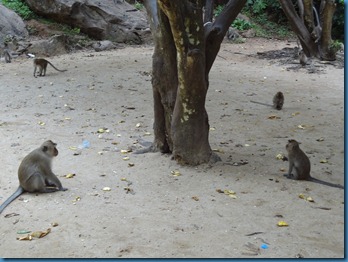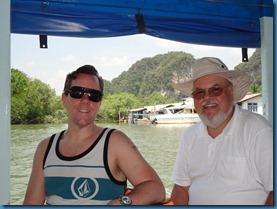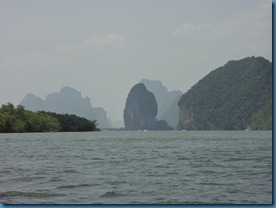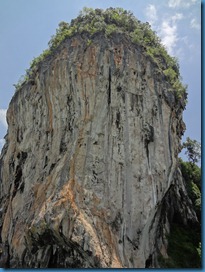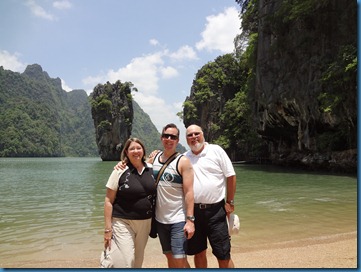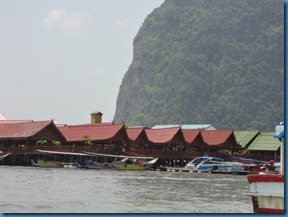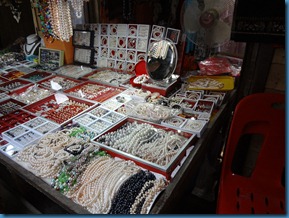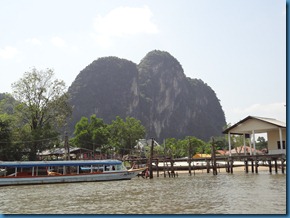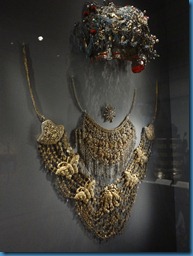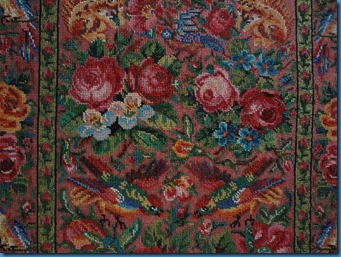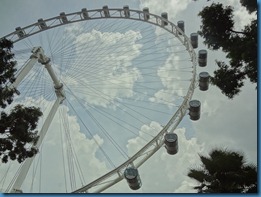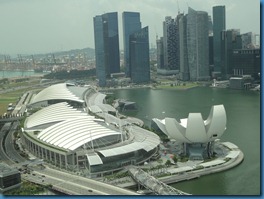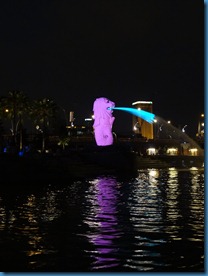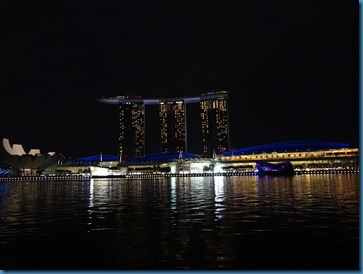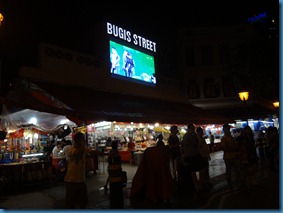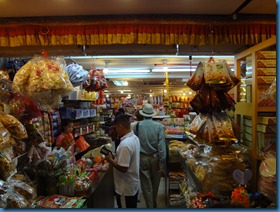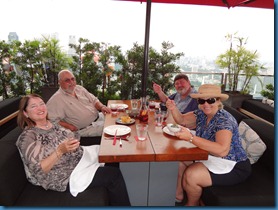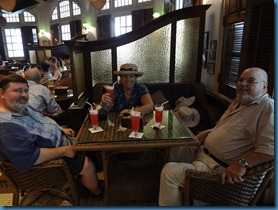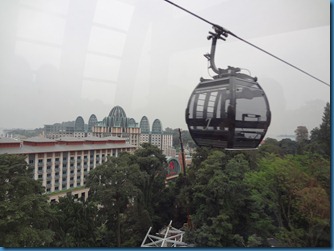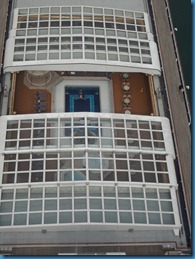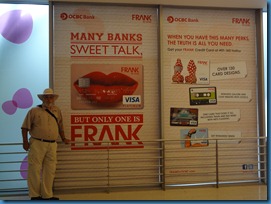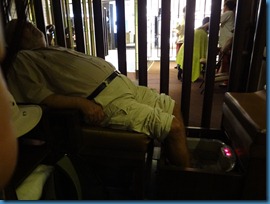… the largest city in Sri Lanka, the commercial capital but not the governmental capital. Because of its strategic port location, Colombo has been settled by almost every country during its long history, including the Greeks, Persians, Romans, Arabs, Chinese, Portuguese, Muslims, Dutch, and then finally the British, under whom the country was known as Ceylon. The city is a mix of old and new, with many lovely old British buildings still in use. A huge variety of gems are mined in Sri Lanka, and Colombo is filled with jewelry shops.
We took a bus tour of the city, looking at city landmarks including a 100-year old clock tower, a lighthouse, Independence Square (where we stopped for photos), and a new theater (both below). While we were at Independence Square, a just-married couple arrived in their wedding attire for photographs. Frank also snapped a photo of a kerosene-seller with his cart.
Our next stop was the Colombo Museum. Housed in a British building from the colonial era, the museum had some interested exhibits, primarily statues of Buddhas, and archeological finds.
The most interesting things at the museum weren’t inside. In a large tree nearby, we discovered an enormous group of huge bats nesting. I was lucky to catch one in flight; they looked like pterodactyls!
We stopped for refreshments at the Galle Face Hotel, built in 1864 and a Colombo landmark. The hotel occupies a prime location in the heart of the city overlooking the Indian Ocean. It faces the mile-long seafront promenade originally designed as a horse racing track. The snack was tasty and our ramble through the sprawling complex reminded us of the Hotel Del Coronado (except with lots of heat and humidity).
Several street people approached us as we got back on the bus, including a snake charmer with his cobra and a man with a monkey on a string.
Our next stop was the Gangarama Buddhist Temple. This large complex houses numerous huge statues of Buddha, as well as a live baby elephant, a huge stuffed predecessor elephant, and an elaborate collection of kitsch. The monks have collected everything donated to the Temple, neatly categorizing thousands of items in cabinets and on shelves, which made my librarian heart skip a beat. There was a shelf of nothing but large silver ladles! it was fascinating!
The most lovely moment came when one of the monks on the spur of the moment offered to bless us, and did so using a solid gold crown. After blessing us with the crown, he tied a string around our wrists, and offered a second blessing.
No description of Sri Lanka would be complete without a photo of a tuk-tuk, the local cab and delivery van.
It was a very interesting day!
